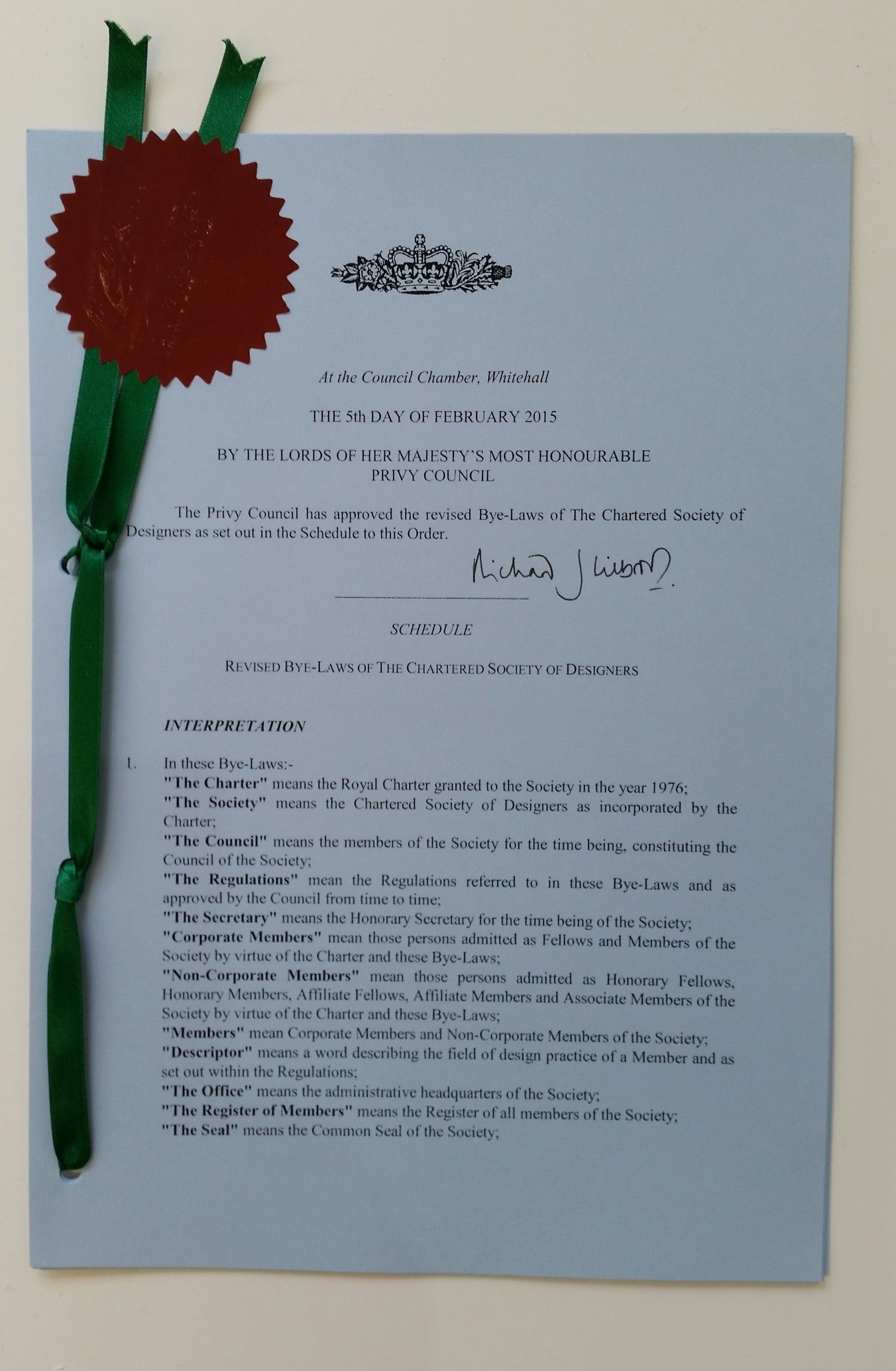04.03.2015
New Bye-Laws for a New Chapter
On 5th February 2015 the Society received approval from the Privy Council for wide ranging changes to its Bye-Laws that were proposed and agreed by CSD members at the AGM in December last year.
The changes were made as a result of a review following the granting of powers by Her Majesty the Queen Elizabeth II in 2011 to allow the Society to set up and maintain The Register of Chartered Designers and award the status of Chartered Designer to professionally practicing designers across all design disciplines.
In addition to developing the Register, the Society has over the past decade established:
- a framework for professional practice, CSD Genetic Matrix™, which now underpins all of its membership accreditation programmes,
- Course Endorsement Programme for those undertaking design training from Level 4 upwards.
- Career Stage Development process aligned to its membership model and a designer’s career to support designers from study through to career exit, and
- Continual Professional Development structure.
David Callcott FCSD, President, commented that, “the time had come to review the governance of the Society ahead of this new chapter in the Society’s development with strategies firmly based on the changing needs of the design sector, in education, design provision and for the users of design.”
A major change has been the adoption of new membership categories unchanged since the Society was founded in 1930. Whilst the typical entry route into design practice from art and design institutions remains the norm, the Society is aware that those practicing in design support fields have often ended up practicing as designers despite having no formal design education.
Two new categories of affiliate membership provide those practicing in design related areas with entry points into the professional body from where they can embark upon the pathway to Chartered Designer status. Affiliate Membership will be available to those practicing whereas Affiliate Fellowship will be available to those working in design research, education, management and publishing. Each carries an accreditation being ‘aCSDm’ and ‘aCSDf’ respectively. Affiliate membership will be equally valuable to those entering the design sector from related professions such as marketing, management, etc.
The introduction of these new categories widens the Society’s representation within the design sector and commerce and reflects the Society’s inclusivity and enthusiasm to allow greater access to the profession.
In addition to these new membership routes requiring application, the Society has also been given approval to establish a new membership category be awarded to designers. Honorary Fellow already exists as a means of recognising the outstanding contributions of individuals to the profession or the Society but cannot be awarded for design achievement. Honorary Membership has now been introduced to recognise up to five designers in any one year who are exemplars in their field. It is hoped that the first awards will be made later in 2015 at the first annual awards event.
Amending the Bye-Laws in respect of membership categories to reflect the diversity of the design sector has also given the Society the opportunity to reflect on its current proposition to specific design sectors. The diversity within the Society’s membership has been both ‘a strength’ and at times ‘a weakness’, especially given the myriad of trade and pseudo-professional organisations that have set up shop in more recent years providing a single design discipline focus. The old model operated by the Society for many years, of defining specific discipline groups, was considered unfit for purpose in this new era of social media and interdisciplinary collaboration and practice. However, the Society has listened to its members’ comments and those within the design sector and recognised the need for individuals to identify their specific proposition, especially when tendering for business, obtaining insurances, operating to standards, adopting industry specific documentation and most importantly achieving accreditation within a specific discipline, specifically Chartered Designer status.
The Society believes that not only should there be an overall ethos of professional practice for designers practicing in any discipline, for which it has developed its framework to ensure there is a generic set of competences against which to benchmark a designer’s practice, but also that there are contextual competences which identify the designer as working in a particular field. This harmonised approach allows members to engage with those in different disciplines but with a common professional bond and this is to be especially encouraged in design education.
The new Bye-Laws now allow the Society to issue its members with a descriptor or designation determining their main area of design specialism. Once issued members will be able to include this after their affix in brackets. A list of approved descriptors is currently being compiled within the Regulations to issue to members later in 2015.
In conducting such a wide ranging review the Society has also taken the opportunity to amend the Bye-Laws to ensure its governance reflects current needs and best practice.
A full copy of the new Bye-Laws can be found on the CSD website.
